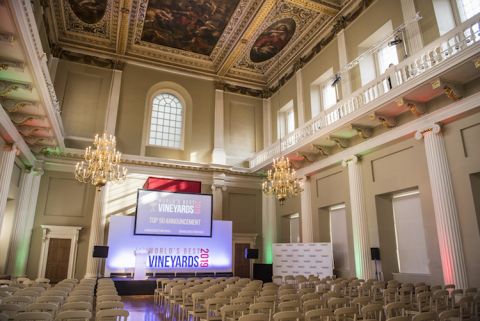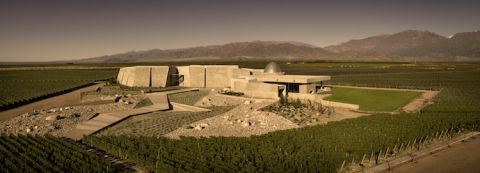You are probably well aware of the World’s 50 Best Restaurants. It’s an annual hullabaloo dreamt up in 2002 by Chris Maillard and Joe Warwick of Restaurant magazine in the UK. In the years since then it has been hugely successful, attracting more publicity and sponsors than you can shake a stick at.
It’s a fairly questionable concept. Every year panels of judges of very varying abilities and experience choose and rank 50 restaurants around the world so that the ‘winner’ can be trumpeted and help to fill acres of newsprint and cyberspace. But no single individual can have eaten even once at all 50 establishments within the previous 12 months, let alone properly monitored their relative performance. How on earth does one rate a simple but divine mom and pop restaurant against one that is aiming for Michelin stars?
It’s almost as ludicrous as doing the same for individual wines, for heaven’s sakes! Hang on, I’ve just remembered that Wine Spectator comes up with a Top 100 every year. Ah well…
Now we have the World’s Best Vineyards, an annual ranking of 50 of them launched under the Rubens frescoes on the ceiling of London’s Banqueting House in July this year. The scheme was dreamt up by Andrew Reed, managing director of the events and exhibitions side of William Reed, the company probably best known in wine circles for having acquired the International Wine Challenge competition. (They have sold off their various drinks trade publications, and indeed Restaurant magazine – moving with the times, don’t you know.)
Reed described the motivation behind the awards thus: ‘Wine is produced in almost 60 countries around the world and is hugely important to many national economies. In the USA alone some 17% of all leisure travellers engage in culinary- and wine-related travel. The World’s Best Vineyards to Visit not only highlights these amazing destinations from around the globe but it will also help raise their profile amongst national and international tourists alike. In an age where the next generation is looking for extraordinary and authentic experiences, these wineries are simply a must-visit!’
The structure of the awards is pretty similar to the restaurant ones: the plan is to hold awards ceremonies around the world, and panels of regional judges are invited to submit suggestions. According to Reed, ‘the judges are not given a specific set of criteria as that makes the output very formulaic. It is about the balance between the site, the experience and the wine, in other words the overall experience for the consumer. It helps if you start with a great wine but it's is not about that alone. An amazing experience will attract tourists to a vineyard where they will able to share in the magic of the destination and become an advocate for that wine and region.’
Tourism is indeed becoming an increasingly important element in what the wine world can deliver (even if travel may run counter to many current concerns about sustainability and the parlous state of the planet). There are conferences on wine tourism around the globe, it seems. Wineries are encouraged to have a fine restaurant as well as a beautifully appointed cellar door where visitors can buy wines to take home as a particularly delicious souvenir of what, it is hoped, was a great visit. These new awards are presumably being presented to the wine world as something that will result in both glory and increased sales.
The top two places in this year’s inaugural awards went to very new South American estates: in first place Sebastián Zuccardi’s dramatically modern winery high up in Argentina’s Uco Valley (immediately above; our image top right shows his father José Alberto collecting the award) followed by Bodega Garzón’s extraordinarily ambitious winery and vineyards on the south-eastern tip of Uruguay in Maldonaldo. Sebastián is the third generation of winemaking Zuccardis. Many wine lovers around the world will know his animated father, based at the original family winery in the much warmer outskirts of the city of the Mendoza, better than Sebastián, who has been devoting his time to establishing this brand new vineyard and winery, with restaurant based on locally sourced produce, needless to say. (See also Mendoza – increasingly diverse and refined and scroll down to Zuccardi.)
Garzón is the brainchild of Argentine billionaire oil magnate Alejandro Bulgheroni, whose gravity-fed winery was opened as recently as 2016 (although the first vines went in, on 1,000 separate plots over 200 ha, if you please, in 2008). The restaurant boasts Argentina’s most famous chef Francis Mallmann as consultant. And there is already a hotel and golf course. (See also Uruguay 2017 – the wines and scroll down to Garzón.) Bulgheroni has also invested in wineries in Montalcino, Chianti Classico and Bolgheri.
South America fielded a full five of the top 10 ‘vineyards’ (actually, wine estates) in this new ranking. Numbers three and four were in Spain (López de Heredia) and Portugal (Quinta do Crasto). The highest-ranking French entry was way down at number 16: Château Smith Haut Lafitte, whose owners Florence and Daniel Cathiard fully deserve recognition for all they have done at this estate just south of Bordeaux, including building a fine hotel, restaurant and spa and pioneering a holistically sustainable approach.
There are only seven French entries in the awards’ list of the top 50 vineyards. It’s extraordinary, when you think about it, that the country that supposedly produces more fine wine than any other is not better geared to tourism. (Tourism was reckoned a dirty word for a long time in Bordeaux.)
But, perhaps even odder, considering the reputation (and reality in my experience) of Italian hospitality, is that there is only one Italian name in the top 50: Antinori’s glamorous newish establishment in the Tuscan countryside south of Florence. That’s half as many as the number of Uruguayan wine estates.
I was also surprised to see only two American names – Robert Mondavi and Opus One – in the list, considering the fact that the Napa Valley has been by far and away the most successful wine region at attracting tourists, and quite well-heeled tourists at that.
All of which points to the fact that the list, like its restaurant counterpart, provides ample opportunity for discussion, criticism and improvement – but that is presumably the point.
I suspect William Reed are on to a commercial winner with this new venture. In this launch year, the lead sponsor was the International Wine Challenge, also owned by William Reed. But, as Andrew Reed says, ‘The concept is to raise the profile of wine tourism around the world, so yes I would hope that there are some very effective sponsorship opportunities.’
For the full list of the top 50 vineyards, see www.worldsbestvineyards.com.















